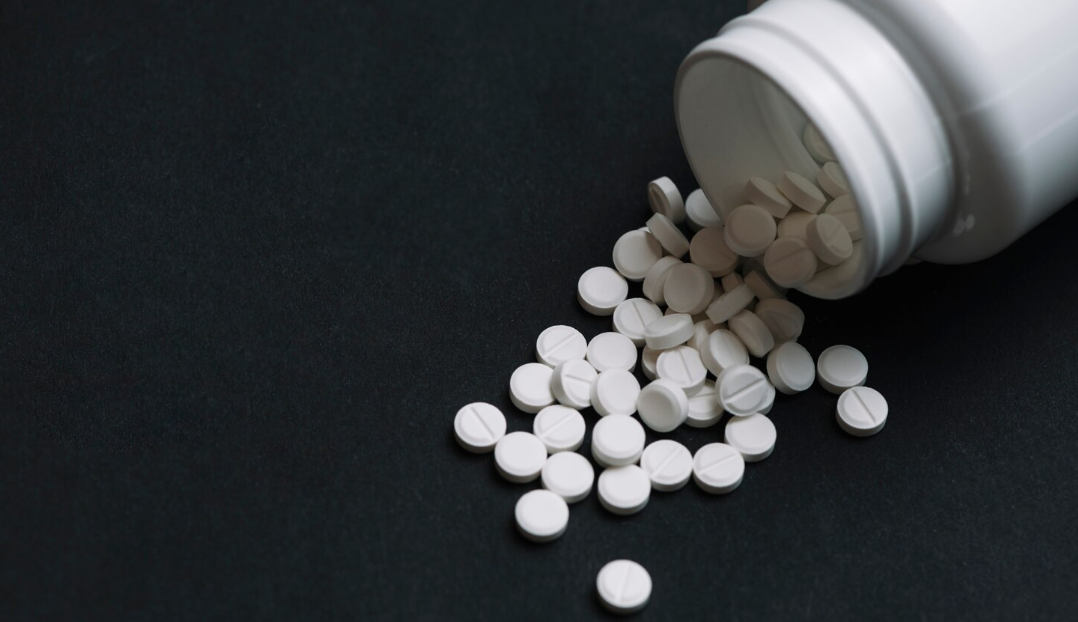The Emergence of Purple Heroin
Purple heroin, a dangerous form of illicit drug, has emerged as a significant concern in recent years. This section aims to shed light on what purple heroin is and provide insights into its origins and composition.
What is Purple Heroin?
Purple heroin is a potent and deadly mixture of heroin and synthetic opioids such as fentanyl or carfentanil. It gets its name from the distinctive purple hue that results from the addition of synthetic dyes or other additives during the manufacturing process. These dyes are often used to mimic the appearance of stronger opioids and can give users a false sense of potency.
The combination of heroin and synthetic opioids creates a highly potent substance that poses a significant risk to users. The unpredictable nature of the drug, coupled with its intense potency, makes purple heroin an incredibly dangerous substance.
Origins and Composition
The exact origins of purple heroin are difficult to trace, as it is an illicit and clandestinely produced drug. However, it is believed to have emerged in response to the growing demand for stronger opioids. The addition of synthetic opioids to heroin allows dealers to increase the potency of the drug, catering to users seeking a more intense high.
The composition of purple heroin can vary, as it is often laced with different synthetic opioids or other substances. This makes it even more hazardous, as users may be unaware of the exact substances they are consuming. The following table provides an overview of some commonly found synthetic opioids in purple heroin:
It is important to note that the potency of synthetic opioids can vary greatly, and even small miscalculations in dosage can lead to overdose or death. The presence of these potent substances in purple heroin underscores the grave dangers associated with its use.
Understanding the emergence and composition of purple heroin is crucial in addressing the risks it poses to individuals and communities. By raising awareness and providing accurate information, we can work towards combating the dangers associated with this deadly drug.
Understanding the Dangers
Purple heroin poses significant dangers to individuals and communities due to its potency, health risks, and the impact it has on society.
Potency and Lethality
Purple heroin is known for its high potency, making it extremely dangerous for those who use it. The potency of purple heroin can vary, but it is often significantly stronger than other forms of heroin. This increased potency increases the risk of overdose and can lead to life-threatening situations.
The lethality of purple heroin is a major concern. The use of this illicit substance has been linked to a rise in overdose deaths. The combination of its high potency and unpredictable composition can make it difficult for individuals to gauge the appropriate dosage, further increasing the risk of a fatal overdose.
Health Risks and Side Effects
Using purple heroin can have severe health risks and a range of detrimental side effects. The exact composition of purple heroin can vary, often containing a mixture of opioids, synthetic opioids, and other dangerous substances. This combination poses significant health risks to users.
Common health risks and side effects associated with purple heroin use include:
Health Risks and Side Effects
- Respiratory depression
- Nausea and vomiting
- Slowed heart rate
- Decreased blood pressure
- Liver and kidney damage
- Infectious diseases (such as HIV and Hepatitis) from sharing needles
It is important to note that the health risks and side effects of purple heroin can vary depending on the specific composition and individual factors.
Impact on Communities
Purple heroin has a devastating impact on communities. The distribution and use of this dangerous substance contribute to a range of social and public health problems. The availability of purple heroin can lead to increased crime rates, addiction, and the breakdown of families and relationships.
Communities affected by purple heroin also face challenges related to the burden on healthcare systems, increased demand for addiction treatment services, and strained law enforcement resources. The harmful consequences extend beyond individual users to impact the overall well-being and safety of communities.
Understanding the dangers associated with purple heroin is crucial in addressing the ongoing risks it poses. Public awareness, prevention efforts, and access to effective treatment options are essential in combating the negative impact of purple heroin on individuals and communities.
Signs and Symptoms of Use
Recognizing the signs and symptoms of purple heroin use is crucial for early intervention and support. It's important to be aware of the physical, behavioral, and psychological indicators that may suggest someone is using purple heroin.
Physical Signs
Purple heroin use can have noticeable effects on a person's physical appearance. Some common physical signs of use include:
Physical Signs
- Needle marks or track marks on the arms or other areas of the body
- Bruising or scarring at injection sites
- Constricted pupils or pinpoint pupils
- Bloodshot or watery eyes
- Flushed or pale complexion
- Extreme weight loss or changes in appetite
- Frequent nosebleeds or chronic runny nose
- Poor hygiene or neglecting personal appearance
- Slurred speech or impaired coordination
It's important to note that these physical signs may vary from person to person and can be influenced by individual factors and the severity of purple heroin use.
Behavioral Signs
Changes in behavior can also indicate purple heroin use. Some common behavioral signs to be aware of include:
Behavioral Signs
- Increased secrecy or withdrawal from family and friends
- Drastic changes in social circle or new associations with individuals involved in substance abuse
- Unexplained financial issues or borrowing money frequently
- Neglecting responsibilities at work, school, or home
- Sudden decline in academic or occupational performance
- Engaging in risky behaviors or illegal activities to obtain or use purple heroin
- Mood swings, irritability, or sudden bouts of anger
- Loss of interest in previously enjoyed hobbies or activities
- Isolation or avoiding social interactions
It's important to approach these behavioral signs with empathy and understanding, as they can be indicative of underlying struggles and addiction.
Psychological Signs
In addition to physical and behavioral signs, purple heroin use can also manifest in psychological symptoms. These may include:
Psychological Signs
- Intense cravings for purple heroin
- Difficulty concentrating or impaired cognitive function
- Memory problems or forgetfulness
- Anxiety, restlessness, or panic attacks
- Depression or persistent feelings of sadness
- Paranoia or hallucinations
- Mood swings or emotional instability
- Suicidal thoughts or self-harm tendencies
- Changes in sleep patterns, such as insomnia or excessive sleepiness
It's important to remember that these psychological signs may vary in severity and duration depending on individual circumstances.
Recognizing the signs and symptoms of purple heroin use is crucial in order to provide support and encourage individuals to seek help. If you suspect someone may be using purple heroin, it's important to approach the situation with care and compassion. Encourage them to seek professional assistance and connect them with appropriate resources and support networks.
Treatment and Recovery Options
When it comes to addressing the dangers of purple heroin, seeking help and accessing appropriate treatment and recovery options are of utmost importance. These options can provide individuals with the support and resources needed to overcome addiction and regain control of their lives. Here are some key aspects to consider:
Seeking Help
The first step towards recovery is acknowledging the need for help. It is essential for individuals struggling with purple heroin addiction to reach out to professionals and support systems that can guide them through the recovery process. This can include:
- Contacting helplines or hotlines dedicated to substance abuse for immediate assistance and guidance.
- Consulting with healthcare providers, such as doctors or addiction specialists, who can provide a comprehensive assessment and recommend suitable treatment options.
- Reaching out to trusted friends, family members, or support groups who can offer emotional support and encouragement.
Detox and Rehabilitation Programs
Detoxification, or detox, is often the initial phase of treatment for purple heroin addiction. During detox, individuals undergo a medically supervised process to safely rid their bodies of the drug and manage withdrawal symptoms. Detox is typically followed by comprehensive rehabilitation programs that focus on addressing the underlying causes and triggers of addiction. These programs may include:
- Inpatient rehabilitation programs that provide 24/7 care and support in a structured environment.
- Outpatient programs that allow individuals to receive treatment while living at home and maintaining their daily responsibilities.
- Medication-assisted treatment (MAT) programs that combine medications, such as methadone or buprenorphine, with behavioral therapy to support recovery and minimize cravings.
Support Systems and Aftercare
Recovery from purple heroin addiction requires ongoing support and aftercare to prevent relapse and promote long-term sobriety. These support systems can include:
- Support groups, such as Narcotics Anonymous (NA), that provide a safe and non-judgmental environment for individuals to share their experiences and receive guidance from peers who have also overcome addiction.
- Individual counseling or therapy sessions with addiction counselors or therapists who specialize in substance abuse treatment.
- Aftercare programs that offer continued support and guidance to individuals who have completed formal treatment programs. These programs may include ongoing therapy, relapse prevention strategies, and assistance in rebuilding one's life after addiction.
By seeking help, accessing detox and rehabilitation programs, and utilizing support systems and aftercare, individuals struggling with purple heroin addiction can embark on a path to recovery. It's important to remember that each person's journey is unique, and finding the right combination of treatment and support is crucial for long-term success.
Combating the Purple Heroin Epidemic
As the prevalence of purple heroin continues to pose a significant threat to communities, it is crucial to implement effective strategies to combat this dangerous epidemic. Addressing the issue requires a comprehensive approach that encompasses prevention, law enforcement efforts, and community involvement.
Prevention Strategies
Prevention plays a vital role in combating the purple heroin epidemic. By focusing on education and awareness, communities can equip individuals with the knowledge and resources needed to make informed decisions. Some key prevention strategies include:
- Education in schools: Implementing drug education programs in schools to educate students about the dangers of substance abuse, including purple heroin.
- Community outreach: Conducting awareness campaigns and workshops to educate community members about the risks associated with purple heroin and other illicit substances.
- Parental involvement: Encouraging parents to engage in open and honest conversations with their children about drug use, emphasizing the dangers and consequences.
- Proper medication disposal: Promoting safe and responsible disposal of unused prescription medications to prevent their misuse.
Law Enforcement Efforts
Effective law enforcement efforts are crucial in combating the illegal distribution and sale of purple heroin. By targeting the source and disrupting the supply chain, law enforcement agencies can help reduce the availability of this deadly substance. Some key law enforcement efforts include:
- Investigations and arrests: Conducting thorough investigations to identify and apprehend individuals involved in the production, trafficking, and distribution of purple heroin.
- Collaboration with other agencies: Collaborating with local, state, and federal agencies to share intelligence and resources in order to dismantle illicit drug networks.
- Interdiction efforts: Implementing measures to intercept and seize illegal drug shipments, thereby preventing the distribution of purple heroin.
- Prosecution and sentencing: Ensuring that individuals involved in the production and distribution of purple heroin are held accountable through appropriate legal action and sentencing.
Community Involvement
Community involvement is essential in combating the purple heroin epidemic. By fostering a sense of unity and support, communities can create a network of resources and assistance for those affected by drug addiction. Some ways communities can get involved include:
- Support groups and counseling services: Establishing support groups and counseling services to provide assistance, guidance, and a safe space for individuals struggling with addiction or affected by purple heroin.
- Community events and forums: Organizing community events and forums to raise awareness about the dangers of purple heroin, provide information about available resources, and promote dialogue on addiction-related issues.
- Collaboration with local organizations: Partnering with local organizations, such as healthcare providers, nonprofits, and faith-based groups, to develop and implement initiatives that address the specific needs of the community.
- Promoting treatment and recovery: Advocating for accessible treatment options and recovery programs, ensuring that individuals seeking help have access to the necessary resources.
By implementing these prevention strategies, strengthening law enforcement efforts, and fostering community involvement, we can work towards combating the purple heroin epidemic and supporting those affected by addiction. It is through collective action and a united front that we can make a significant impact in saving lives and safeguarding our communities.
Resources and Support
When dealing with the dark reality of purple heroin, it's crucial to be aware of the resources and support available to those affected. Whether you are seeking help for yourself or someone you know, there are various avenues to explore. Here are some key resources and support options:
Hotlines and Helplines
Hotlines and helplines provide immediate assistance and support to individuals facing substance abuse issues, including purple heroin. Trained professionals are available around the clock to offer guidance, information, and help connect individuals with the appropriate resources.
Here are a few hotlines and helplines that can be contacted:
Support Groups
Support groups provide a vital source of strength, encouragement, and understanding for individuals and families affected by purple heroin addiction. These groups offer a safe and non-judgmental space to share experiences, gain insights, and receive support from others who have faced similar challenges.
Some support groups that focus on substance abuse and addiction include:
- Narcotics Anonymous (NA): A global fellowship of individuals who share their experiences, strength, and hope in order to recover from drug addiction.
- SMART Recovery: A science-based, self-help program that offers tools and support for individuals seeking to overcome addiction and addictive behaviors.
- Families Anonymous: A support group for families and friends affected by a loved one's substance abuse or addiction.
Educational Resources
Educational resources play a vital role in raising awareness and providing information about purple heroin and its dangers. These resources can help individuals understand the risks associated with purple heroin use, recognize the signs of addiction, and learn about available treatment options.
Some educational resources that offer valuable information include:
- National Institute on Drug Abuse (NIDA): A comprehensive website providing research-based information on drug abuse, addiction, and treatment.
- Substance Abuse and Mental Health Services Administration (SAMHSA): An agency that offers resources, publications, and treatment locators for individuals seeking help for substance abuse and mental health issues.
- Centers for Disease Control and Prevention (CDC): A trusted source of information on substance use, prevention strategies, and public health initiatives related to drug abuse.
By utilizing these resources and support networks, individuals and their loved ones can find the assistance they need to navigate the challenges of purple heroin addiction. It's important to remember that recovery is possible with the right help and support.
Sources
https://www.armsacres.com/purple-heroin-dangers-and-effects
https://www.townsendla.com/purple-heroin-dangers-effects
https://www.avenuesrecovery.com/purple-heroin
https://www.coachellavalleyrecoverycenter.com/purple-heroin
https://www.newhorizonscenterspa.org/purple-heroin


.jpg)





.png)
.png)
.png)
.png)